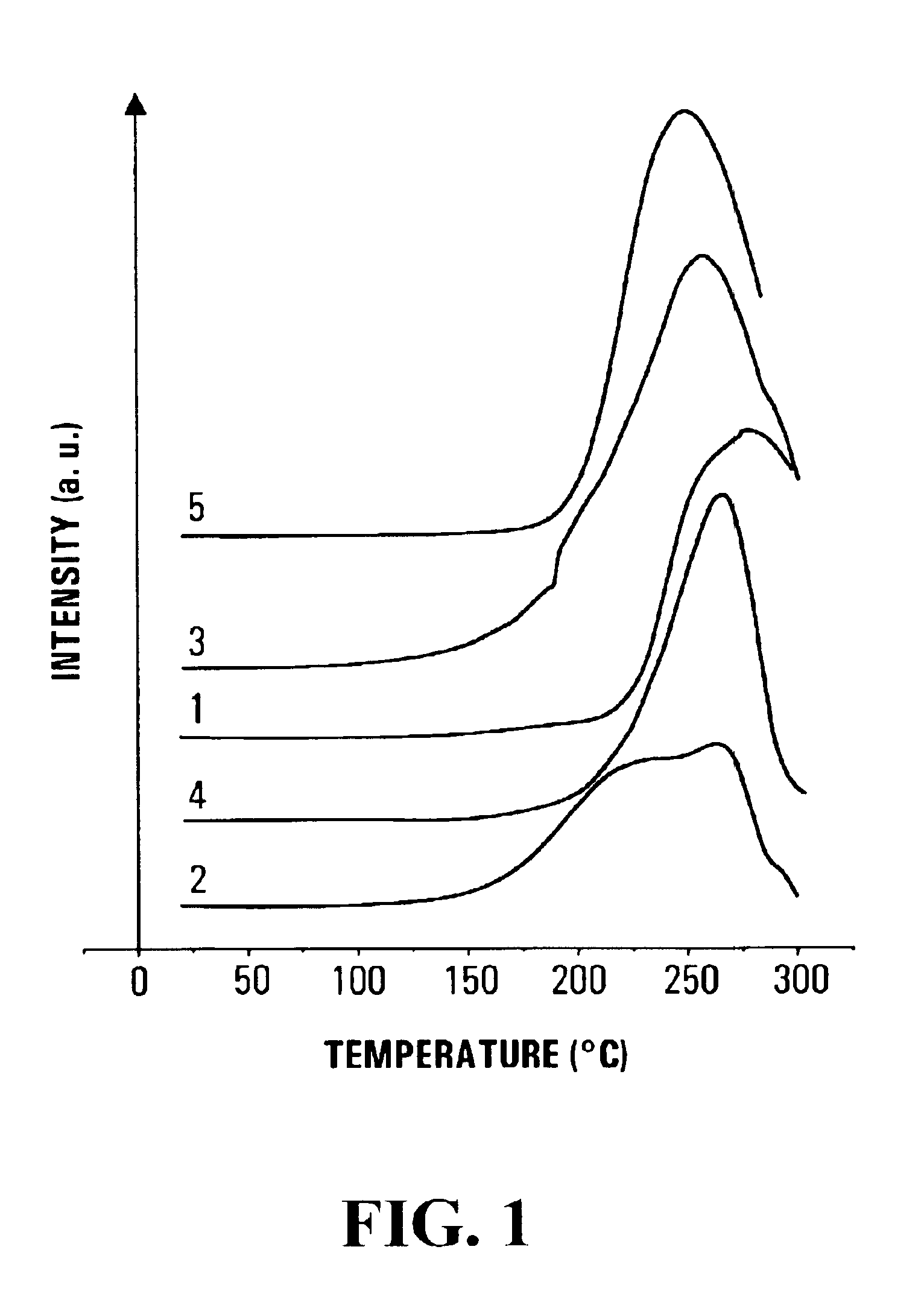Method for reversible storage of hydrogen and materials for hydrogen storage
a hydrogen and material storage and reverse storage technology, applied in the field of hydrogen storage materials, can solve the problems of low hydrogen storage capacity of existing systems, depletion of non-renewable energy sources, heavy environmental pollution, etc., and achieve the effect of increasing the overall pressure of h2 absorption and desorption and increasing the absorption ra
- Summary
- Abstract
- Description
- Claims
- Application Information
AI Technical Summary
Benefits of technology
Problems solved by technology
Method used
Image
Examples
example 1
[0065]0.8 gram Li3N was put into the sample cell of a Pressure-Composition-Isotherm (PCI) unit. The hydrogen storage capacity was determined by introducing 40 bar of hydrogen into the sample cell, which was preheated to 300° C. After 2 hours of absorption, about 10 wt % of hydrogen was absorbed. Desorption was performed by evacuating the PCI system to 0.1 mbar at a temperature of 350° C. for 2 hours. The amount of desorbed hydrogen was measured by re-absorption of hydrogen at 300° C. and under 30 bar of hydrogen for 2 hour. About 5.5 wt % of hydrogen was re-absorbed, which means that about 5.5 wt % of hydrogen was desorbed at 350° C.
example 2
[0066]120 mg of graphite was admixed with 350 mg of lithium metal as homogeneously as possible. The mixture was then exposed to nitrogen gas at room temperature for 3 hours to form a Li—N—C sample. 0.5 gram of the Li—N—C sample was put into a PCI sample cell and an autosoak measurement was then done at 180° C. under a hydrogen pressure of 40 bar for 3 hours. About 7 wt % of hydrogen was absorbed. On desorbing at 350° C., about 3.5 wt % of hydrogen was released.
example 3
[0067]60 mg of carbon nanotubes were admixed into 1.1 gram of lithium, then the same procedure as Example 1 was followed except, using an autosoak temperature of 250° C. About 9 wt % of hydrogen was absorbed. On desorbing at 300° C., about 4.5 wt % of hydrogen was released.
PUM
| Property | Measurement | Unit |
|---|---|---|
| pressure | aaaaa | aaaaa |
| temperature | aaaaa | aaaaa |
| pressure | aaaaa | aaaaa |
Abstract
Description
Claims
Application Information
 Login to View More
Login to View More - R&D
- Intellectual Property
- Life Sciences
- Materials
- Tech Scout
- Unparalleled Data Quality
- Higher Quality Content
- 60% Fewer Hallucinations
Browse by: Latest US Patents, China's latest patents, Technical Efficacy Thesaurus, Application Domain, Technology Topic, Popular Technical Reports.
© 2025 PatSnap. All rights reserved.Legal|Privacy policy|Modern Slavery Act Transparency Statement|Sitemap|About US| Contact US: help@patsnap.com



